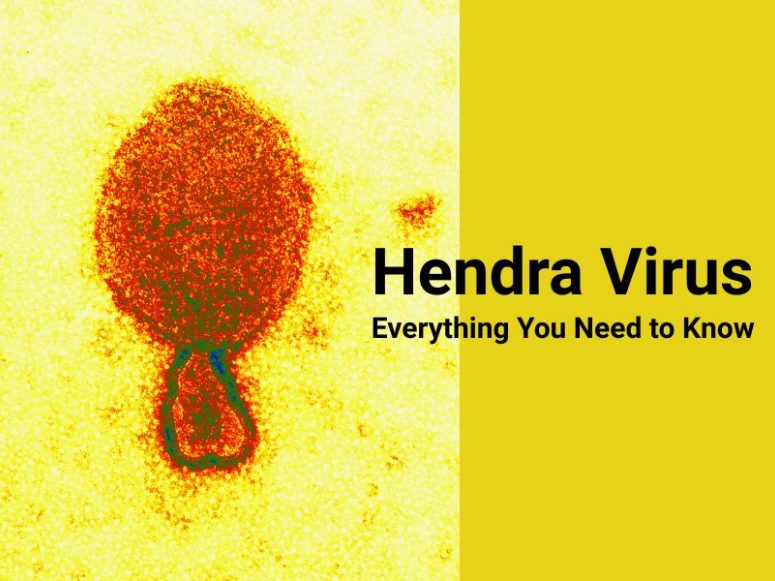When you hear about dangerous viruses, your mind might jump to COVID-19, the flu, or even Ebola. But there’s another lesser-known virus that’s quietly lurking in parts of Australia, with deadly potential: the Hendra virus.
Though rare, Hendra virus has killed horses and people—and it serves as a powerful reminder of the close connection between human and animal health. Here's what you need to know.
What Is Hendra Virus?
Hendra virus (HeV) is a zoonotic virus, meaning it spreads from animals to humans. It was first discovered in 1994 in the Brisbane suburb of Hendra, Australia, after an outbreak in horses resulted in the deaths of both animals and humans.
It belongs to a family of viruses called Henipaviruses, which are known for causing severe respiratory and neurological diseases.
The natural host of Hendra virus is the fruit bat (also known as the flying fox). These bats don’t typically get sick, but they can pass the virus in their urine, feces, or birthing fluids, which can contaminate the environment where horses feed or drink.
How Do People Get It?
Humans do not catch Hendra virus from bats directly. Instead, the virus spills over to horses—usually when they come into contact with bat-contaminated feed or water. From there, people can get infected through close contact with sick or dying horses, particularly their bodily fluids.
To date, all known human cases have involved people who had close, unprotected contact with infected horses—such as veterinarians and horse caretakers.
Human-to-human transmission has not been documented, but the virus’s high mortality rate makes it a serious concern for anyone who works with horses.
Symptoms in People
Hendra virus symptoms can start out mild but worsen quickly. The incubation period (the time from exposure to symptoms) ranges from 5 to 21 days.
Early symptoms include:
- Fever
- Headache
- Muscle aches
- Tiredness
- Cough or sore throat
More severe symptoms:
- Pneumonia
- Meningitis (inflammation of the brain and spinal cord)
- Encephalitis (brain swelling)
- Coma and death
Out of seven confirmed human cases, four were fatal—a sobering statistic with a case-fatality rate of nearly 57%.
How Is It Diagnosed and Treated?
Doctors can diagnose Hendra virus using:
- PCR tests to detect viral genetic material,
- Serological tests to look for antibodies,
- Imaging or lab tests to rule out other infections.
Unfortunately, there is no specific treatment or approved antiviral for Hendra virus at this time. Care is focused on supportive treatment, such as managing symptoms and complications in a hospital setting.
One promising therapy is a monoclonal antibody called m102.4, which has been used on an emergency basis and is being studied further.
Prevention: The Best Medicine
Australia introduced a Hendra virus vaccine for horses in 2012. Since horses act as the link between bats and people, vaccinating horses breaks the transmission chain and is considered the most effective prevention strategy.
For anyone working with horses:
- Always wear gloves, masks, and protective gear when handling sick animals.
- Practice good hygiene—wash hands after contact with animals or their fluids.
- Isolate and report any horse that shows signs of respiratory illness or neurological symptoms.
Why Should We Still Care?
While Hendra virus remains rare, it hasn’t gone away. Cases continue to emerge in parts of Queensland and New South Wales, and environmental changes—like urban expansion and climate shifts—could increase future outbreaks.
Flying foxes are expanding their range, and as humans and horses live closer to wildlife, the chances of spillover grow.
How to Stay Safe
- If you own horses: Talk to your vet about Hendra virus vaccination.
- If you’re a vet or equine worker: Use protective equipment, follow biosecurity protocols, and know the early signs of infection.
Final Thoughts
Hendra virus may not make headlines often, but it's a powerful example of how human and animal health are deeply connected. Thanks to advances like horse vaccines and better awareness, we can reduce the risk—and save lives.
If you work around horses or live in Australia, staying informed and practicing prevention is key.
If you're looking for primary care services, book an appointment at Som Medical Practice—we're here to support your health with expert, compassionate care.
References
- Mahalingam S, et al. Hendra Virus: An Emerging Paramyxovirus in Australia. The Lancet Infectious Diseases. 2012.
- Shoemaker T, Choi MJ. Henipavirus Infections. CDC Yellow Book.
- Ong KC, Wong KT. Henipavirus Encephalitis. Brain Pathology. 2015.
- Broder CC, et al. A Treatment for and Vaccine Against the Deadly Hendra and Nipah Viruses. Antiviral Research. 2013.
- Broder CC, et al. Hendra Virus and Nipah Virus Animal Vaccines. Vaccine. 2016.
- OpenEvidence Article: Link to full article
- Quarleri J, et al. Henipaviruses: An Expanding Global Public Health Concern? GeroScience. 2022.








